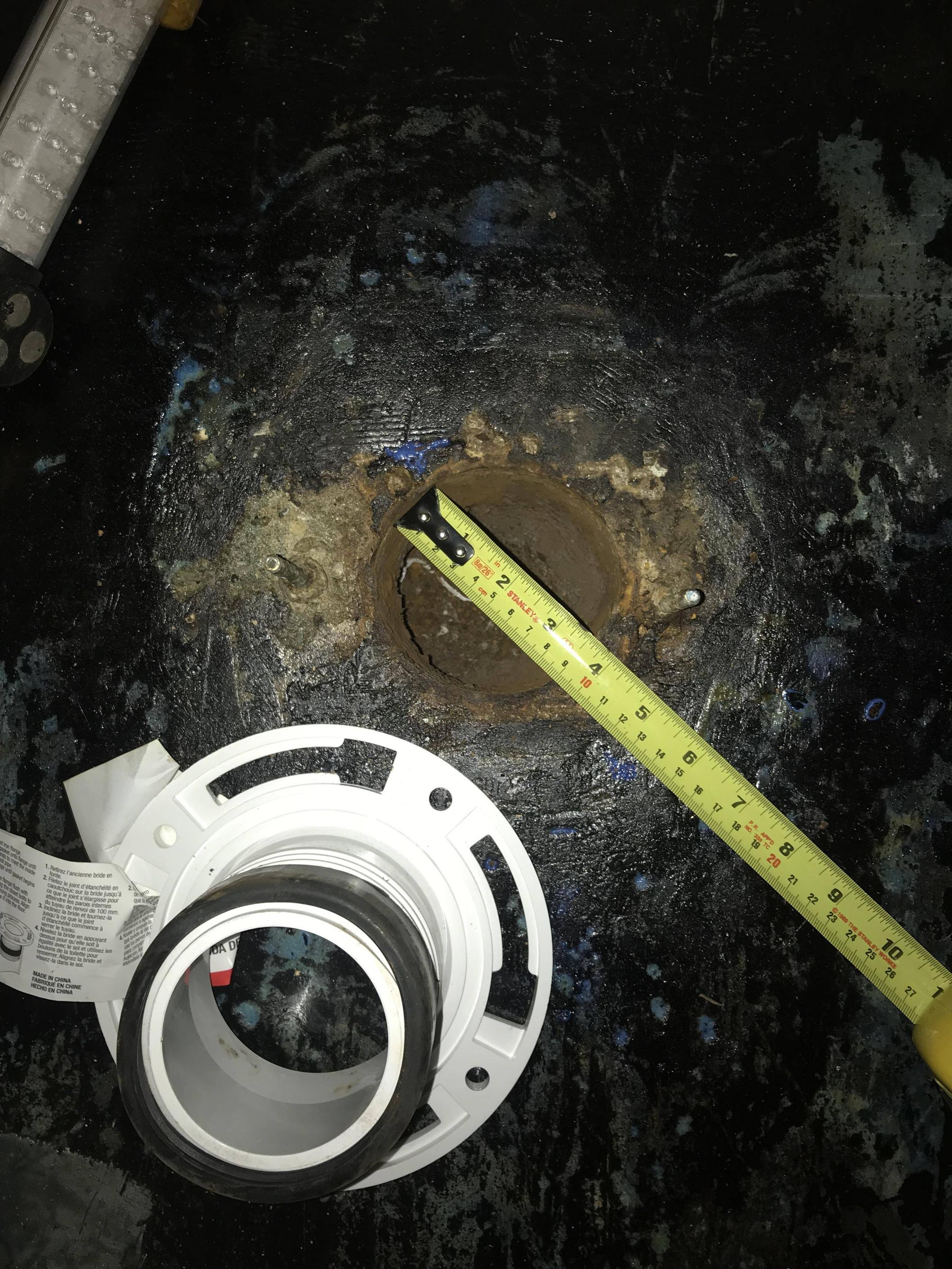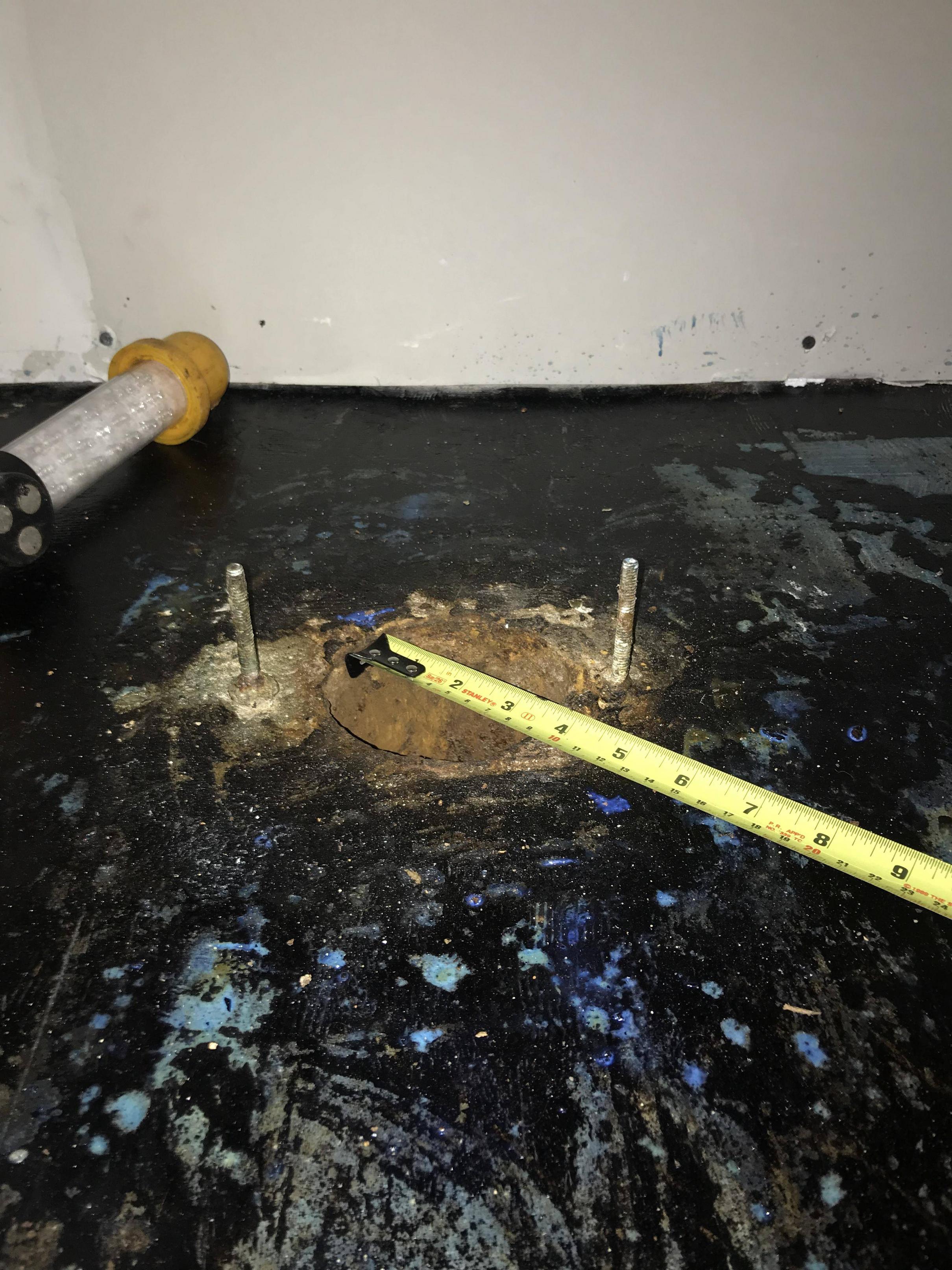I'm in the process of a bathroom+bedroom remodel in my basement and have encountered a snag in the bathroom with the existing cast iron pipe that is in the concrete slab. The house was built in '52, but I'm not sure how old the pipe is. What I do know is that it's 3.5" ID and isn't perfectly round. It goes about 4" deep before making the 90º bend toward the main.
The previous owner's just put wax rings right on the slab and bolted the toilet down with the studs that are set into the concrete. My plan was to cut those old studs off and tap-con a a new flange into the floor. However, none of the push in closet flanges I've tried provide a tight enough seal against the old cast iron pipe. I thought I could press in a 4" closet flange with the rubber gasket, but it's just too tight.
Do I have any other options outside of having my plumber break up the slab, pull the old 90º pipe out and replace it with PVC or ABS? I'd rather not go this route, but understand my options are probably limited.
Photos of pipe


These things haven't worked

The previous owner's just put wax rings right on the slab and bolted the toilet down with the studs that are set into the concrete. My plan was to cut those old studs off and tap-con a a new flange into the floor. However, none of the push in closet flanges I've tried provide a tight enough seal against the old cast iron pipe. I thought I could press in a 4" closet flange with the rubber gasket, but it's just too tight.
Do I have any other options outside of having my plumber break up the slab, pull the old 90º pipe out and replace it with PVC or ABS? I'd rather not go this route, but understand my options are probably limited.
Photos of pipe


These things haven't worked

